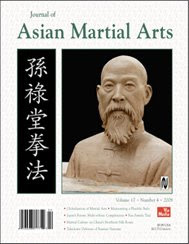
Something must be going on in the fetid world of Steven Seagal: my statcounter has regestered hit after hit for two Seagal articles I wrote. I mean it's off the charts.
The first article,
Lebell vs. Seagal, details how Seagal allegedly got his ass kicked by legendary Judo man Gene Lebell (shitting his pants in the process).
The second and highly requested article "
The Company He Keeps: The Mafia, CIA and Steven Seagal" details Seagal's shady dealings with mobsters and intelligence spooks. For some reason, there has been a huge spike in hits on these articles. The only thing I can find in the news is this:
Steven Seagal Gets a Real Badge, Reality Show
Josh Grossberg Josh Grossberg
Mon Nov 24, 3:23 pm ET
Los Angeles (E! Online) – Steven Seagal is out for justice again...this time for realsies.
The erstwhile big-screen action hero has become an honest-to-goodness crimefighter in New Orleans, a gig he's ready to share with the TV-viewing public.
His movie career mired in the direct-to-DVD dustbin, Seagal, 57, has now been deputized by the Jefferson Parish County Sheriff's Office, and he's preparing a Cops-like reality series for A&E that documents his efforts to clean up the Big Easy. The show is set to premiere in late 2009.
We're just waiting for the inevitable programming block of Steven Seagal: Lawman and Dog the Bounty Hunter. TiVos set for stunned.
*********
So for whatever reason, let's satisfy that Seagal curiousity with a rehash of "Bad Boy" trash stories about our favorite bloated Aikidoka movie star:
The Company He Keeps
The Mafia, CIA and Steven Seagal
Of all the Hollywood martial arts stars, Steven Seagal may be my favorite. His stunts are no-nonsense and he uses techniques that any competent martial artist could use. No incredible 360-degree jump-spin crap, just good solid Aiki and “crash-and-bash”. Stuff I could use. One of my Aikido instructors in the past, Robert Button trained with Seagal in a Dojo in Tokyo. He said he had never, ever, been thrown harder by anybody than Seagal. Seagal was the real deal.
Despite my leanings towards Seagal’s techniques, movie-star looks, and story plot lines, I have already trashed Seagal. In February ’07 I wrote about the legendary story of Seagal getting his ass kicked by aging Judo man Gene Lebell. As the story goes, Lebell choked Seagal out to the point where Seagal shit his pants. (LINK HERE)
But Seagal has more in his background than his current washed-up movie career, he has a whole host of bad-boy friends.
The Girls
Despite his suave and swarthy approach, Seagal has consistently had trouble with relationships with women. His first wife was Miyako Fujitani, a Japanese national Seagal followed from California to Japan.
They had a child together, and Seagal’s Dojo in Japan was actually founded by Fujitani’s father, owned by Seagal’s mother-in-law, and managed by his wife.
John Connoly, in his epic expose’ of Seagal in “SPY” Magazine reported that Seagal was assigned four women to be his “production assistants” in 1990. All four quit in 1991. Connoly writes that as assistant Raeanne Malone was brushing her teeth in Seagal’s quarters during an interview, he commented publicly that “You look like that when I come in your mouth”. (ouch) Two of the women were paid around $50,000 each to drop charges against Seagal.
His Japanese wife, Fujitani, went on to describe how Seagal told her “I never will betray you”, right before he took all her savings and moved back to America to pursue his movie career. Without seeking a divorce, Seagal went ahead and married Adrienne La Russa in 1984, followed by actress Kelly LeBrock. La Russa told Connoly that she couldn’t say much, “Because I am afraid of Steven and his friends”. As alleged, Seagal was so broke in 1985 that he arranged for LeBrock’s Porsche Carrera to be stolen so he could collect the insurance money.
The Boys
Seagal apparently had developed other sources for money; he was said by friends to have disappeared while flat broke and returned with a new car and a stack of $100-dollar bills six-inches high. Seagal boasted to friends that he had done a job for the mob.
Seagal’s mob ties were known at times. His one-time partner Julius Nasso was a pharmacist from Staten Island and owner of a company that “supplied pharmaceuticals to merchant vessels”.Nasso and Seagal formed a production company that was headquartered in Brooklyn. Nasso had served as an assistant to Sergio Leone in the Mafia film “Once Upon A Time In America”, which spawned his movie desires. Nasso’s uncle was the owner of a concrete company that was involved in a Mafia bid-rigging scheme and company employees testified for the government, leading to the imprisonment of Anthony “Fat Tony” Salerno. Nasso was also the best man at the Seagal-LeBrock wedding, and held the deed on Seagal’s house.
Much later, the tables would turn and Seagal and Nasso would be at odds, but more on that later.
Perhaps even more curious than Seagals Mob friends, are his seemingly outrageous claims of having been a CIA contract employee. Robert Strickland, an actual CIA contract agent claimed that Seagal made him a $50,000 offer to kill Gary Goldman, a former Mercenary who had collaborated with Seagal on movies but threatened to expose Seagal’s exaggerated CIA ties. Other mercenaries and agents Seagal associated with claimed he started telling stories of their mercenary adventures as if they were his own. This certainly did not set well with the rough boys, one of whom claimed Seagal “Would surely die of starvation if he was given a compass and a map that led to a restaurant five miles away”.
But the Truth was, Seagal was indeed running with a very bad crowd.
Robert Booth Nichols
It’s a little unclear how Seagal hooked up with Robert Booth Nichols, identified in Federal wiretaps as an associate of the Gambino Crime Family. Nichols became one of the technical advisors on Seagal’s film “Under Siege”, and actually had a bit part in the movie. An associate of Nichols said Nichols once hung an adversary up in an airplane hanger and started up the propeller plane in front of where he hung. We don’t know what happened after that.
Nichols has a reputed history during the Reagan administration of being involved in the Nicaraguan Contra re-supply operation. That means Guns down, Cocaine back. How else does the CIA fund an “off-the-shelf” operation? (To quote Oliver North).
But it was Booth’s relationship with murdered investigative reporter Danny Casolaro that really creeps people out. Casolaro had befriended Nichols as he was researching deep levels of government corruption in the Reagan era. His thesis was called “The Octopus” a criminal enterprise involving the Mob and the Reagan administration that had “tentacles” everywhere. Casolaro was using Nichols as a primary source, and was found dead in his hotel room before he could publish his completed story.
Nichols had been the owner of “Meridian arms”, and had been accused of attempting to take over Howard Hughes’ former company, The Summa Corporation.
At the time, Nichols was involved in a scheme to manufacture arms on an Indian reservation in California, the reason being there was no authority other than reservation law, and the airspace was open for uncharted, un-inspected flights.
Casoloro was at some point clearly over his head. I remember hearing about his death when I was writing for alternative newspapers in Portland. One of my contacts was Heinrich Rupp, a survivor of the Nazi Luftwaffe who claimed to have flown George Bush senior to the treasonous “October Surprise” meetings with the Iranians – to hold the American hostages until Carter was defeated by Reagan. Rupp referred to Casoloro’s death and warned me off of a subject I was writing about. I wrote it anyway.
Danny Casoloro was found in the bathtub, in his hotel room. None of his friends or family said he had been depressed, yet he was found with dozens of razor cuts to his wrists, some down to the tendons. No one knows how this was possible, and plastic bags and bloody towels were found on the floor. Forensic evidence was destroyed when Casolero’s body was embalmed.
According to an FBI agent named Thomas Gates, who was dogging Nichols and was actually being sued by him, Casoloro had told Gates that his life was in danger. The last known contact with Casoloro was Nichols, who may be the main suspect in Casoloro’s “Suicide”.
As reported, Casoloro had discovered that Nichols had one weak spot, one that he might have to kill for. Federal agents had told Casoloro that Nichols had offered to be a snitch against the mob, probably to cover his ass. One way or the other, Casolero died with that knowledge, His death ruled a suicide.
Detectives, Movie Stars and Hillary Clinton
Hollywood private investigator Anthony Pellicano is in big trouble. Remember Seagal’s pal Julius Nasso? He and Seagal had now fallen out, with allegations by Seagal that Nasso and the Mob were attempting to extort money from Seagal. Seagal was deeply intertwined with various crime families and was treading water, trying to stay on top. Well, Pellicano’s name came up in the course of the Mob investigations. He was already known for his connections to the Clintons. According to Judicial Watch, a citizen’s legal watchdog group, Hillary Clinton had previously hired Pellicano in 1992 to get dirt on Gennifer Flowers, who had claimed to have had an affair with Bill Clinton. Pellicano is now awaiting sentencing for 76 out of 77 counts of racketeering, wiretapping and operating a criminal enterprise. The list of his clients and targets is a virtual whose-who of Hollywood.
Allegedly, Seagal hired Pellicano to go after writer Anita Busch of the Los Angeles Times, who had written unfavorable reports about Seagal. As the story goes, Pellicano allegedly detailed associate Alexander Proctor out for the job. Anita Bush came to her car one day to find the windshield smashed, with a dead fish and a rose stuck in it, along with a note saying STOP!
Authorities investigating Pellicano and Proctor raided Pellicano’s Sunset Boulevard office and discovered C-4 plastic explosive, hand grenades and presumably other weapons. As stated, Pellicano is currently awaiting sentencing.
While Seagal's Mob ties are certainly more clear than his association with shady intelligence operatives, he has at times been involved with some bad cats. Seagal has attempted to live his life like one of his own movies.
And come to think of it, I haven’t seen a Steven Seagal movie come out for quite a while now…
Further reading:
The Waterfront Trials
More on Pellicano
Reprint of 1993 Spy Magizine article
*(Go to link above for embedded links and comments)
























